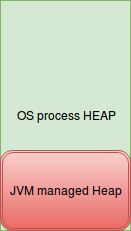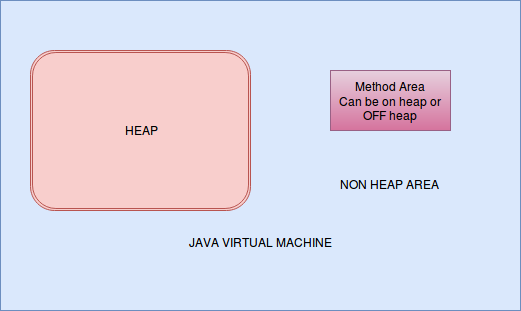Code to Memory mapping in Java
Map code to physical memory in Java
Operating System Perspective (OS) : From Operating System perspective, a process representation in memory is represented as

Take aways :
- Operating System has the same perspective for all the processes, irrespective of which language has been used to create the binary for the process.
- Its the same for JAVA , C , C++ , PHP, Perl , Python as its how the OS perceives the process .
- The representation is on RAM , so what we call stack , heap , data or code is a logical binding , as underlying storage is RAM.
- Stack is known to grow down with the criteria , one can add data onto the top and remove from the top.
- Stack elements can be removed starting from top , no random deletion of elements are possible.
- Heap is the logical structure where allocation and deallocation can happen randomly . (Heap is not queue )
- Both stack and Heap differs only in the logical way of accessing the data (insertion , retrieval and deletion) and both are mapped on same Map.
[addToAppearHere]
What is so special about Java processes.
- Java classes runs on JVM which internally manages HEAP.
- The management guarantees that any allocation of memory on the JVM manged HEAP will be deallocated automatically.
- To deallocate JVM runs garbage collection threads along with the Code you write.
- All Java does is manages a part of the HEAP , you are free to allocate memory(JAVA provides API) outside the Java managed HEAP.
- If one allocates memory outside JVM manged heap , deallocation is the responsibility of the programmer.
Lets take a sample Java class
public class SampleClass { private int state; public SampleClass(int input){ state = input; } public int getState(){ return state; } public static void main(String[] args) { SampleClass var = new SampleClass(10); System.out.println(var.getState()); } }
[addToAppearHere]
Java code is compiled and executed , during code execution Java class files is consumed by JVM binary which generates instructions which are executed by CPU.
Most important instruction in code
SampleClass var = new SampleClass(10);
| Code | Where in Process memory(RAM) |
| getState() void main() | HEAP area |
| SampleClass var | STACK area |
| Sample Class has just one instance variable int a | HEAP area |
KEY TAKE AWAYS :
- All the functions of a class is stored in Code area
- The references are stored in stack
- The actual class ( the instance variables ) are stored in Heap
- Its not possible to instantiate Class on Stack in Java .
- This is representation of Java code From OS process memory model .
- All Java does is manages a part of the HEAP , you are free to allocate memory(JAVA provides API) outside the Java managed HEAP.
- If one allocates memory outside JVM manged heap , deallocation is the responsibility of the programmer.
Lets take a deep dive in How JVM manages the memory .

Abstract view of JVM memory management.
JVM specification provides flexibility on what to place where

Heap is divided into : Young Generation | OLD(Tenured) Generation | Meta Generation (perm Gen in JDK 7 )
| Classes .class files | META generation |
| static primitive type , refrences | META Generation |
| object refrenced by Static refrences | Tenured Generation |
| Functions inside the Class | Method Area (can be in Meta or other part of heap) |
| local variables | STACK |
| References or primitive as a instance variable | HEAP |